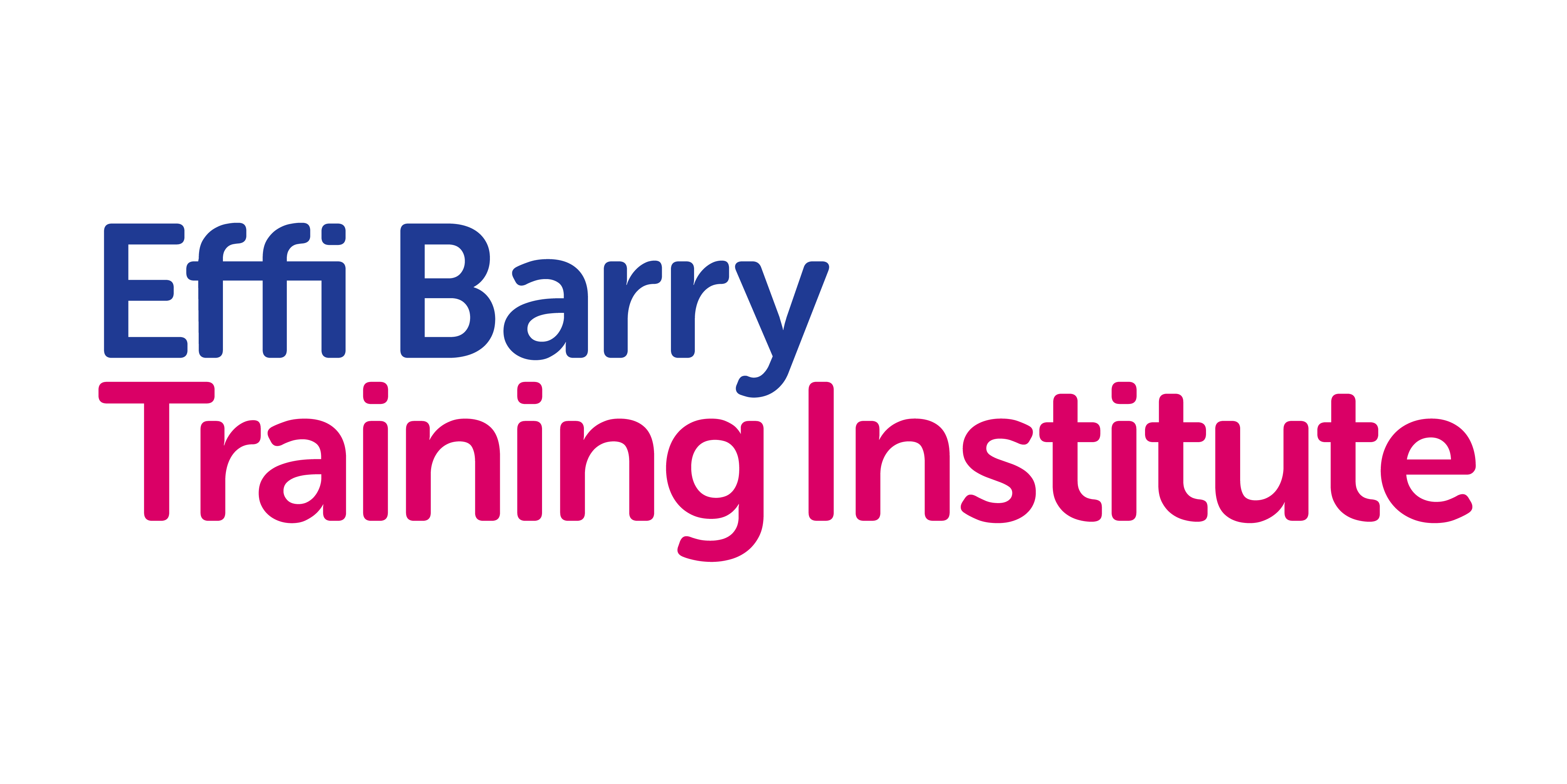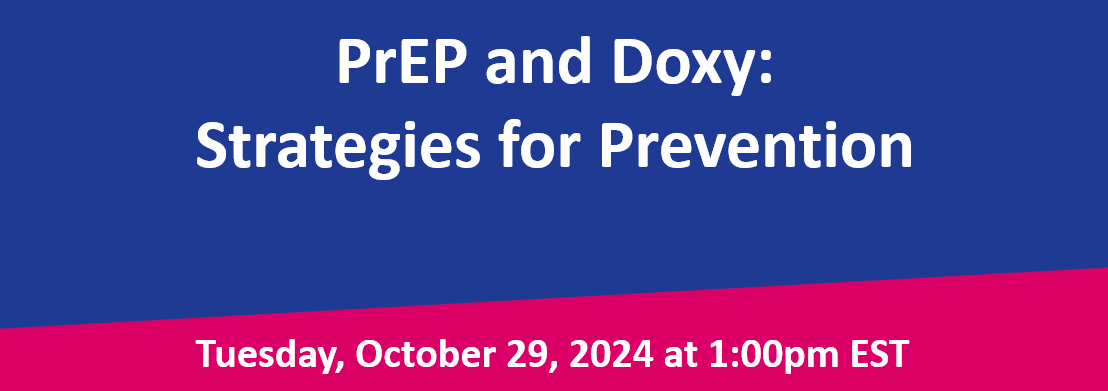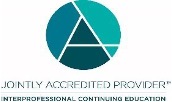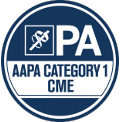

Course Description: The PrEP and Doxy: Strategies for Prevention Webinar offers an in-depth exploration of innovative HIV and STI prevention methods. It focuses on the combined use of PrEP (pre-exposure prophylaxis) for HIV prevention and doxycycline as a potential pre and post-exposure prophylaxis to prevent certain bacterial STIs. Attendees will gain insights into the latest research and best practices for incorporating these strategies into prevention efforts.
This course is jointly provided by Postgraduate Institute for Medicine and HealthHIV.
Release Date: October 29, 2024
Expiration Date: October 28, 2025
UAN number: JA4008162-9999-24-479-H02-P
Target Audience
This activity is intended for physicians, pharmacists, registered nurses, PAs, psychologists, social workers and other healthcare providers engaged in the care of patients with HIV.
Educational Objectives
After completing this activity, the participant should be better able to:
- Understand the Mechanism of PrEP and Doxycycline for Prevention
- Identify Best Practices for Implementation
- Explore Barriers and Solutions to Wider Adoption
Faculty

I. Monet Ouwinga, MD
Dr. Immirne Ouwinga is a board certified Family Medicine provider serving the Greenbelt area of Prince George’s County serving as the Program and Medical director of Title X. Dr. O, as she prefers. Dr. O has been practicing medicine since 2008.
After completing her family medicine residency at Cook County- Loyola University in Chicago she went on to do a Maternal Child Health fellowship. Her fellowship allowed her to work with a high-risk population, including but not limited teenage pregnancy, substance users, HIV, limited housing and more. Dr. Ouwinga has participated in multiple medical missions to Haiti and Peru, delivering babies and caring for patients with limited resources.
Dr. Ouwinga is passionate about delivering the best care to all of the patients she treated regardless of socio-economic status. She has a holistic approach when caring for her patients with interest in mental health, helping people of color to cope with past and present trauma.
A native New Yorker, she speaks Spanish and Haitian Creole.
Disclosure of Conflicts of Interest
Postgraduate Institute for Medicine (PIM) requires faculty, planners, and others in control of educational content to disclose all their financial relationships with ineligible companies. All identified conflicts of interest (COI) are thoroughly vetted and mitigated according to PIM policy. PIM is committed to providing its learners with high quality accredited continuing education activities and related materials that promote improvements or quality in healthcare and not a specific proprietary business interest of an ineligible company.
The faculty reported the following relevant financial relationships with ineligible entities related to the educational content of this CE activity:
The faculty presenter has nothing to disclose.
The PIM planners and others have nothing to disclose. The HealthHIV planners and others have nothing to disclose.
Joint Accreditation Statement
 In support of improving patient care, this activity has been planned and implemented by the Postgraduate Institute for Medicine and HealthHIV. Postgraduate Institute for Medicine is jointly accredited by the Accreditation Council for Continuing Medical Education (ACCME), the Accreditation Council for Pharmacy Education (ACPE), and the American Nurses Credentialing Center (ANCC), to provide continuing education for the healthcare team.
In support of improving patient care, this activity has been planned and implemented by the Postgraduate Institute for Medicine and HealthHIV. Postgraduate Institute for Medicine is jointly accredited by the Accreditation Council for Continuing Medical Education (ACCME), the Accreditation Council for Pharmacy Education (ACPE), and the American Nurses Credentialing Center (ANCC), to provide continuing education for the healthcare team.
Physician Continuing Medical Education
The Postgraduate Institute for Medicine designates this endured activity for a maximum of 1.0 AMA PRA Category 1 Credit(s)™. Physicians should claim only the credit commensurate with the extent of their participation in the activity.
Continuing Nursing Education
The maximum number of hours awarded for this Continuing Nursing Education activity is 1.0 contact hours.
Continuing Pharmacy Education
Postgraduate Institute for Medicine designates this continuing education activity for 1.0 contact hour(s) (0. 10 CEUs) of the Accreditation Council for Pharmacy Education.
Universal Activity Number - JA4008162-9999-24-479-H02-P
Type of Activity: Knowledge
Hardware/Software Requirements (Required for Internet-based ACPE activities only)
Include minimum hardware, software, internet connectivity and connection speed requirements for accessing the internet-based activity.
Policy on Privacy and Confidentiality (Required for Internet-based ACPE activities only)
Please see final activity for the policy on privacy and confidentiality that relates to this internet activity.
Continuing Optometry Education - COPE
![]() This course is COPE approved for 1.0 hour(s) of CE Credit. Activity #129570 and Course ID 94713-PB. Check with your local state licensing board to see if this counts toward your CE requirement for re-licensure.
This course is COPE approved for 1.0 hour(s) of CE Credit. Activity #129570 and Course ID 94713-PB. Check with your local state licensing board to see if this counts toward your CE requirement for re-licensure.
Continuing Physician Assistant Education
 Postgraduate Institute for Medicine has been authorized by the American Academy of PAs (AAPA) to award AAPA Category 1 CME credit for activities planned in accordance with AAPA CME Criteria. This activity is designated for 1.0 AAPA Category 1 CME credits. PAs should only claim credit commensurate with the extent of their participation.
Postgraduate Institute for Medicine has been authorized by the American Academy of PAs (AAPA) to award AAPA Category 1 CME credit for activities planned in accordance with AAPA CME Criteria. This activity is designated for 1.0 AAPA Category 1 CME credits. PAs should only claim credit commensurate with the extent of their participation.
Continuing Social Work Education
![]() As a Jointly Accredited Organization, Postgraduate Institute for Medicine is approved to offer social work continuing education by the Association of Social Work Boards (ASWB) Approved Continuing Education (ACE) program. Organizations, not individual courses, are approved under this program. State and provincial regulatory boards have the final authority to determine whether an individual course may be accepted for continuing education credit. Postgraduate Institute for Medicine maintains responsibility for this course. Social workers completing this course receive 1.0 Clinical continuing education credits.
As a Jointly Accredited Organization, Postgraduate Institute for Medicine is approved to offer social work continuing education by the Association of Social Work Boards (ASWB) Approved Continuing Education (ACE) program. Organizations, not individual courses, are approved under this program. State and provincial regulatory boards have the final authority to determine whether an individual course may be accepted for continuing education credit. Postgraduate Institute for Medicine maintains responsibility for this course. Social workers completing this course receive 1.0 Clinical continuing education credits.
Continuing Psychologist Education
Continuing Education (CE) credits for psychologists are provided through the co-sponsorship of the American Psychological Association (APA) Office of Continuing Education in Psychology (CEP). The APA CEP Office maintains responsibility for the content of the programs.
Credit Designation
This program offers 1.0 continuing education credits for psychologists.
Disclosure of Unlabeled Use
This educational activity may contain discussion of published and/or investigational uses of agents that are not indicated by the FDA. The planners of this activity do not recommend the use of any agent outside of the labeled indications. The opinions expressed in the educational activity are those of the faculty and do not necessarily represent the views of the planners. Please refer to the official prescribing information for each product for discussion of approved indications, contraindications, and warnings.
Disclaimer
Participants have an implied responsibility to use the newly acquired information to enhance patient outcomes and their own professional development. The information presented in this activity is not meant to serve as a guideline for patient management. Any procedures, medications, or other courses of diagnosis or treatment discussed or suggested in this activity should not be used by clinicians without evaluation of their patient's conditions and possible contraindications and/or dangers in use, review of any applicable manufacturer's product information, and comparison with recommendations of other authorities.